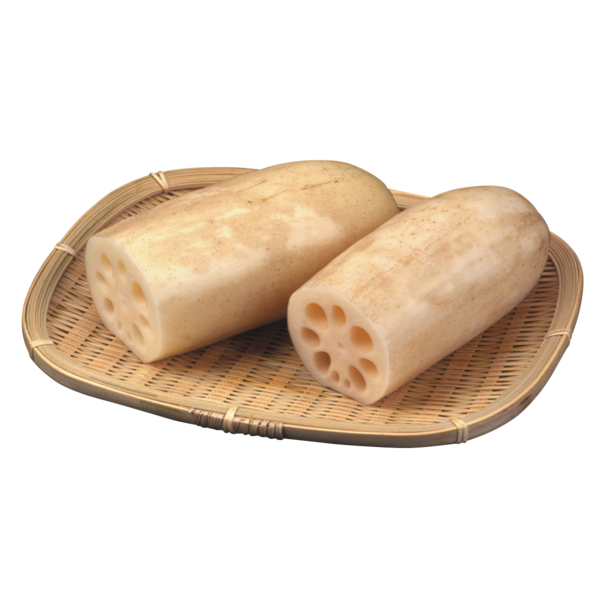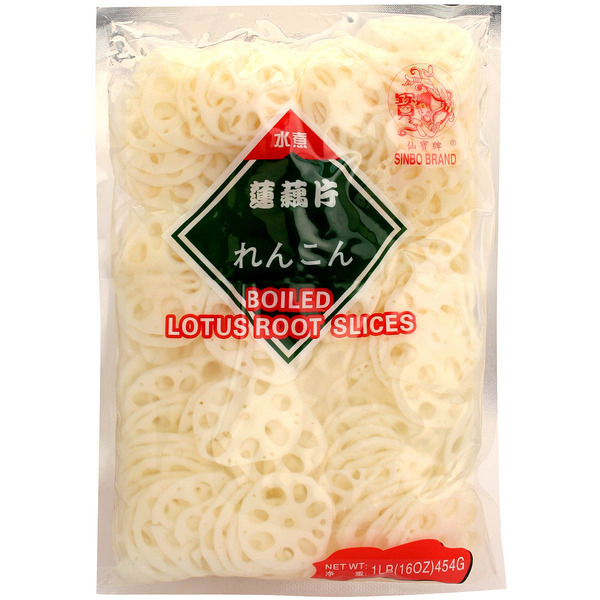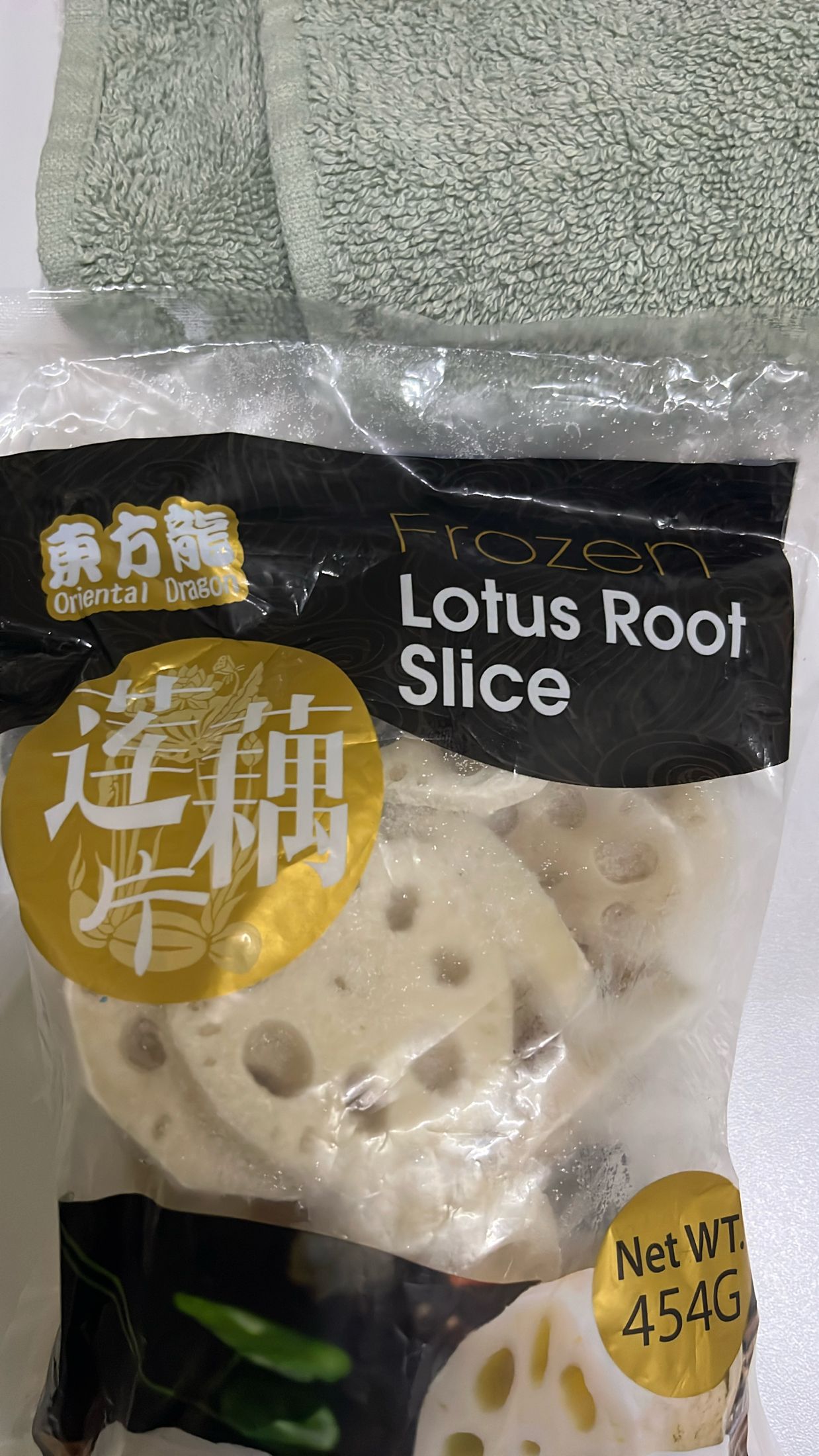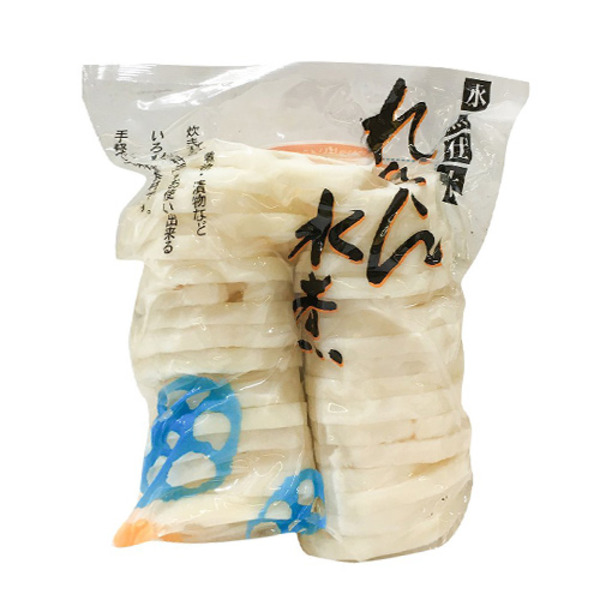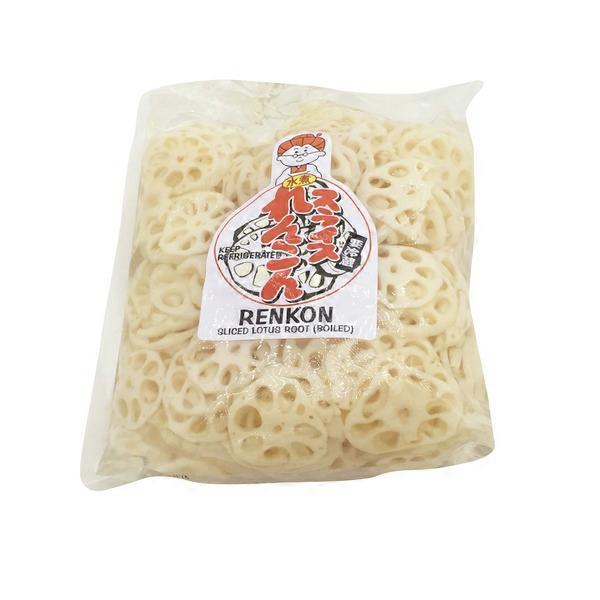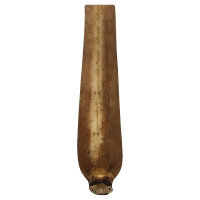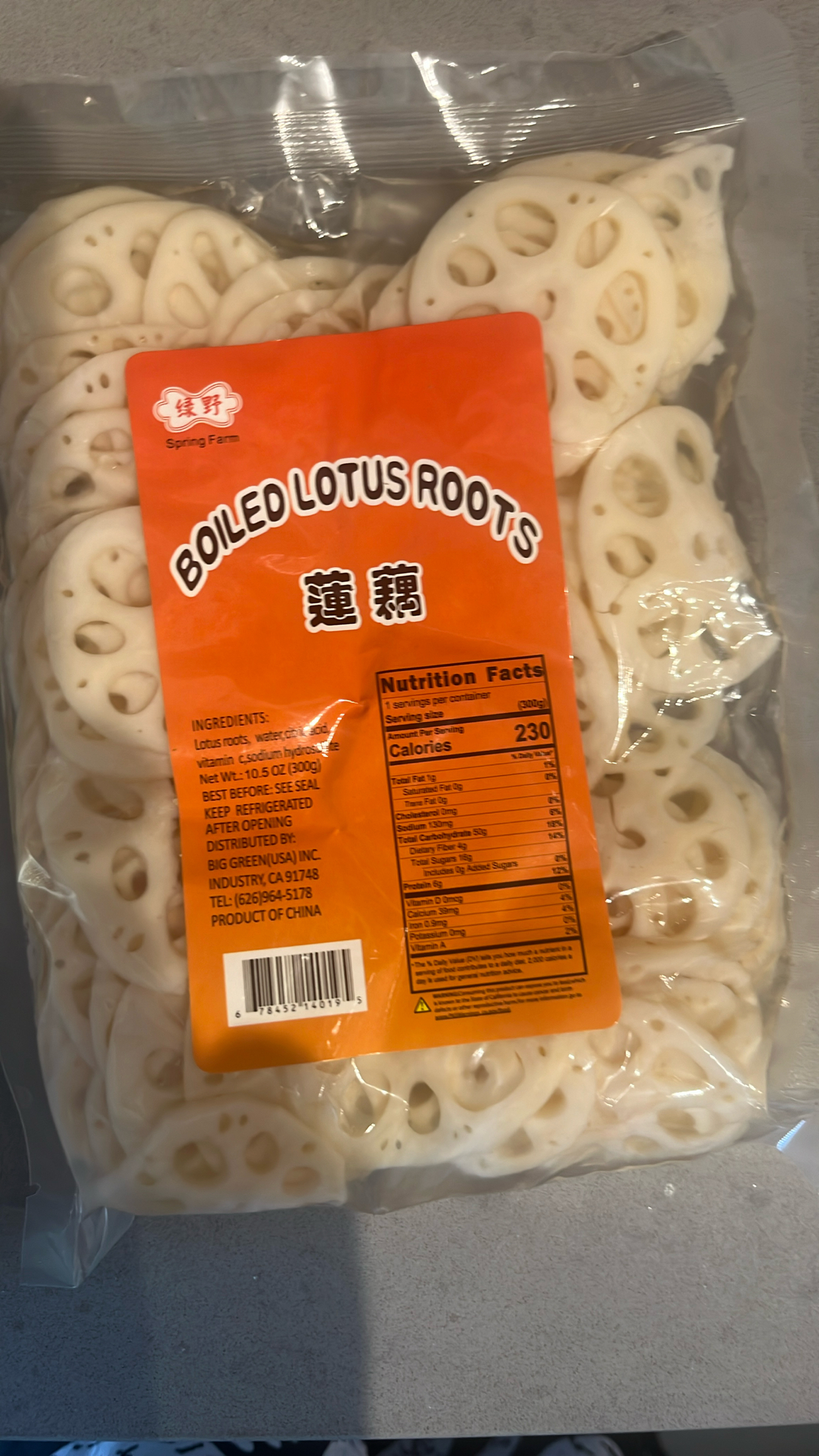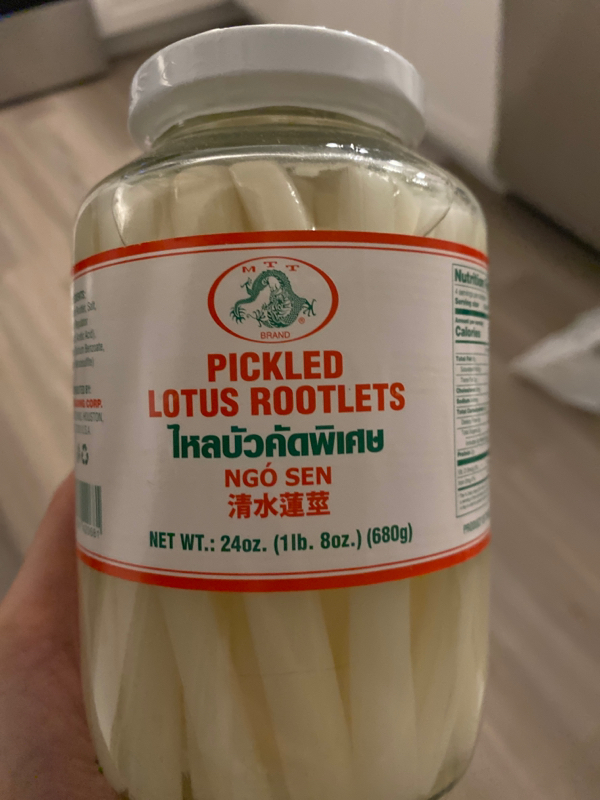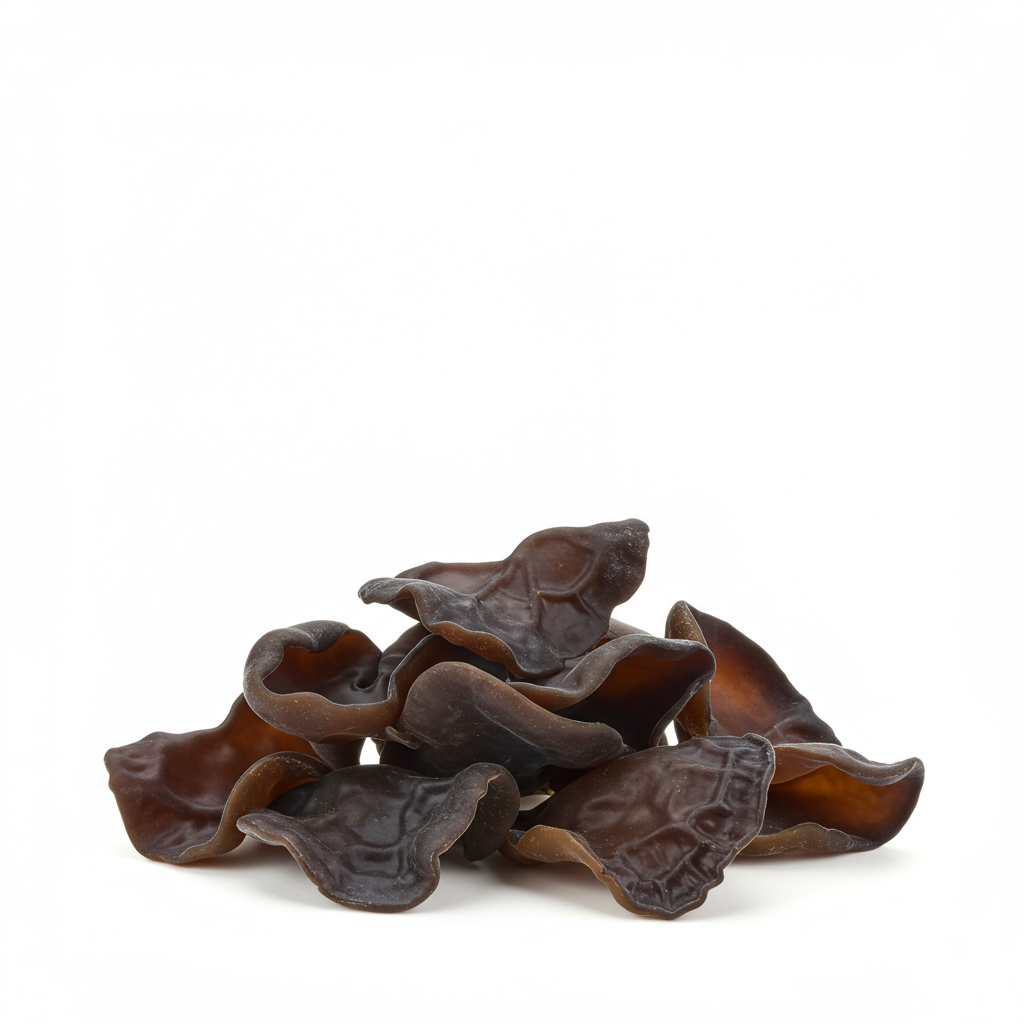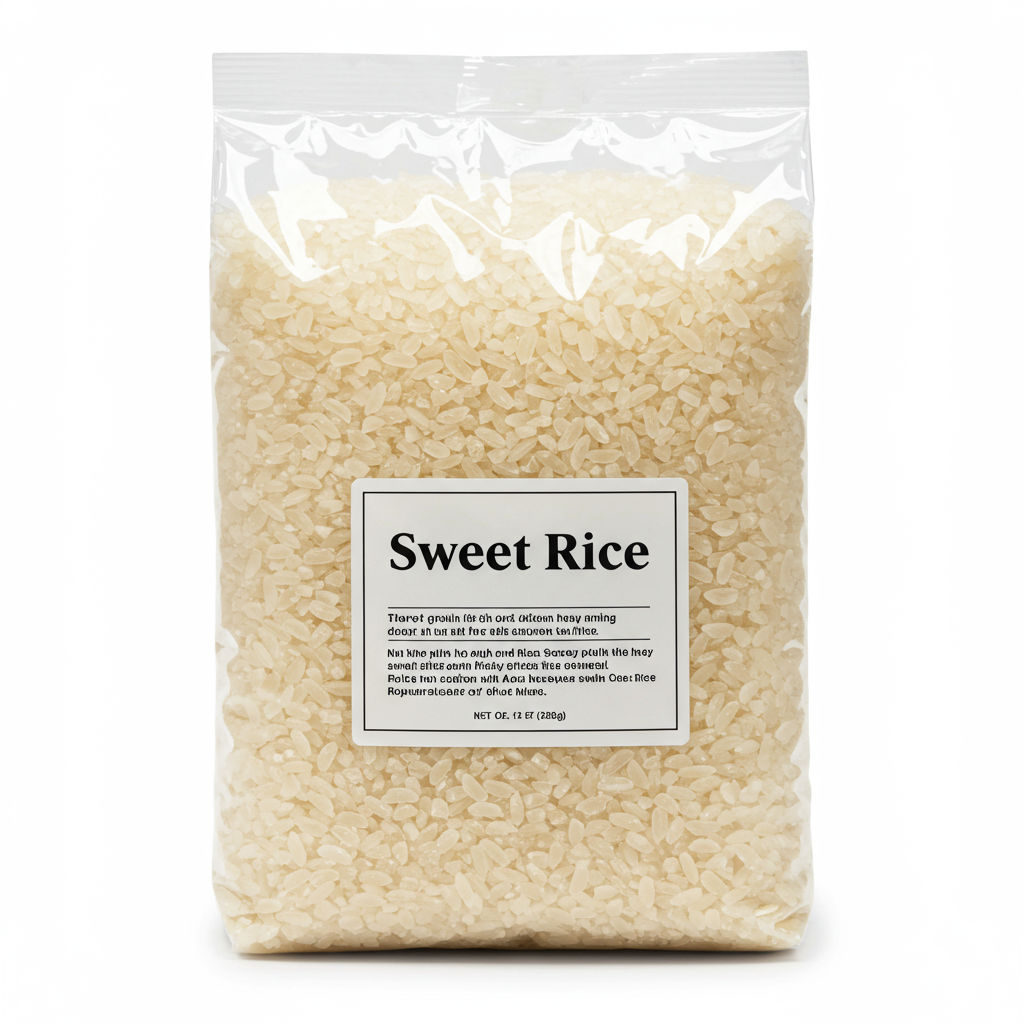SIDE DISHES
SOUPS
SALADS
Lotus Root
Lotus root, scientifically known as Nelumbo nucifera, is the edible rhizome of the sacred lotus plant, frequently used in various Asian cuisines. The root boasts a mildly sweet, earthy taste and a distinct crunchy texture, offering a unique and versatile ingredient in dishes ranging from stir-fries to soups. Rich in essential nutrients like fiber, vitamins, and minerals, lotus root is often regarded as a healthy and nutritious ingredient in one's diet.
As a popular component in Asian cooking, specifically Chinese, Japanese, and Korean cuisine, lotus root can be prepared in several ways such as boiling, stir-frying, deep-frying, or even eating it raw in salads. Its large, porous holes lend well to soaking in the flavors from sauces and seasonings, enhancing the taste of any dish.
86%
CARBS
1%
FAT
13%
PROTEIN
34 Lotus Root Products
Lotus Root Is Frequently Used With
Lotus Root FAQ
Lotus root is a versatile and nutritious ingredient widely used in Asian cuisines for its unique, crunchy texture, and mildly sweet, earthy flavor. While it's a relatively easy ingredient to work with, there's often confusion about its appropriate preparation and usage. People sometimes struggle to peel it due to its hard exterior, and improperly cleaned and peeled lotus roots can result in a bitter flavor. Ensure the root is washed thoroughly and peeled extensively so you can savor its delicate taste fully. The best way to yield the maximum flavor is to let it soak in sauces and seasonings, as its porous structure absorbs them well.
Overcooking is another area where people go wrong. Lotus root should retain its crispiness, so don't cook it until it becomes mushy. Timing is crucial when applying heat to lotus root, and it’s best to add it later in the cooking process. If you're going to add it to a stir-fry, for example, introduce it near the end.
One lesser known trick when cooking with lotus root is to avoid discoloration, soak the peeled slices in water mixed with a small amount of vinegar before cooking. Despite its frequent use in savory dishes, lotus root can also be used in sweet dishes. For example, after boiling it in sugar water, you can have it as a sweet dish or crush it into a paste to make desserts.
How can I clean and peel lotus root?
Does lotus root turn black after cutting?
Can I eat lotus root raw?
Should lotus root be cooked before eating?
Why is my lotus root bitter?
Can I stir-fry lotus root?
Can I boil lotus root?
How long does it take to stir-fry lotus root slices?
Can I eat the skin of lotus root?
Can lotus root be used in desserts?
Expiration & Storage Tips
When does lotus root expire?
Lotus root's shelf life can vary depending on how it's stored. If it's unopened and still in its original packaging (usually vacuum packed), it can last a few months due to its low water content. However, if you purchase fresh lotus root, it should be consumed within 1-2 weeks. For both cases, it’s recommended to check the expiration date if it’s available. Once lotus root has been cut or prepared, it can last in the fridge for about 3-4 days. Avoid freezing the lotus root as it could potentially lose its unique crunchy texture.
How do you tell if lotus root is bad?
The best way to tell if lotus root has spoiled is by taking a good look and having a sniff. If you notice any dark spots or mould growing on it, or if the texture has become soft and squishy, then it's time to throw it out. On the other hand, if it boasts an unpleasant or sour smell instead of its typical earthy scent, that's also a sign of spoilage. Lastly, if it has been stored in the fridge for more than a week, it's best to discard it to avoid any health risks.
Tips for storing lotus root to extend shelf life
• Store uncut lotus root in a cool and dark place, ideally in a vegetable drawer in your fridge.
• Once cut or prepared, the lotus root should be consumed immediately. However, if you have leftovers, make sure to wrap them tightly in a plastic wrap or place it in an airtight container before storing in the fridge.
• To prevent it from turning brown once cut, you could soak the root in vinegar or lemon water.
• Always ensure that your lotus root does not come in contact with moisture, as it can promote mould growth.
EXPIRES WITHIN
3 - 6
WEEKS
Health Info
Macros
10g
CARBS
0g
FAT
1g
PROTEIN
Allowed on these diets
LOW FAT
HIGH CALCIUM
VEGETARIAN
KETO
PALEO
WHOLE 30
MEDITERRANEAN
LOW CARB
VEGAN
LACTOSE FREE
GLUTEN FREE

